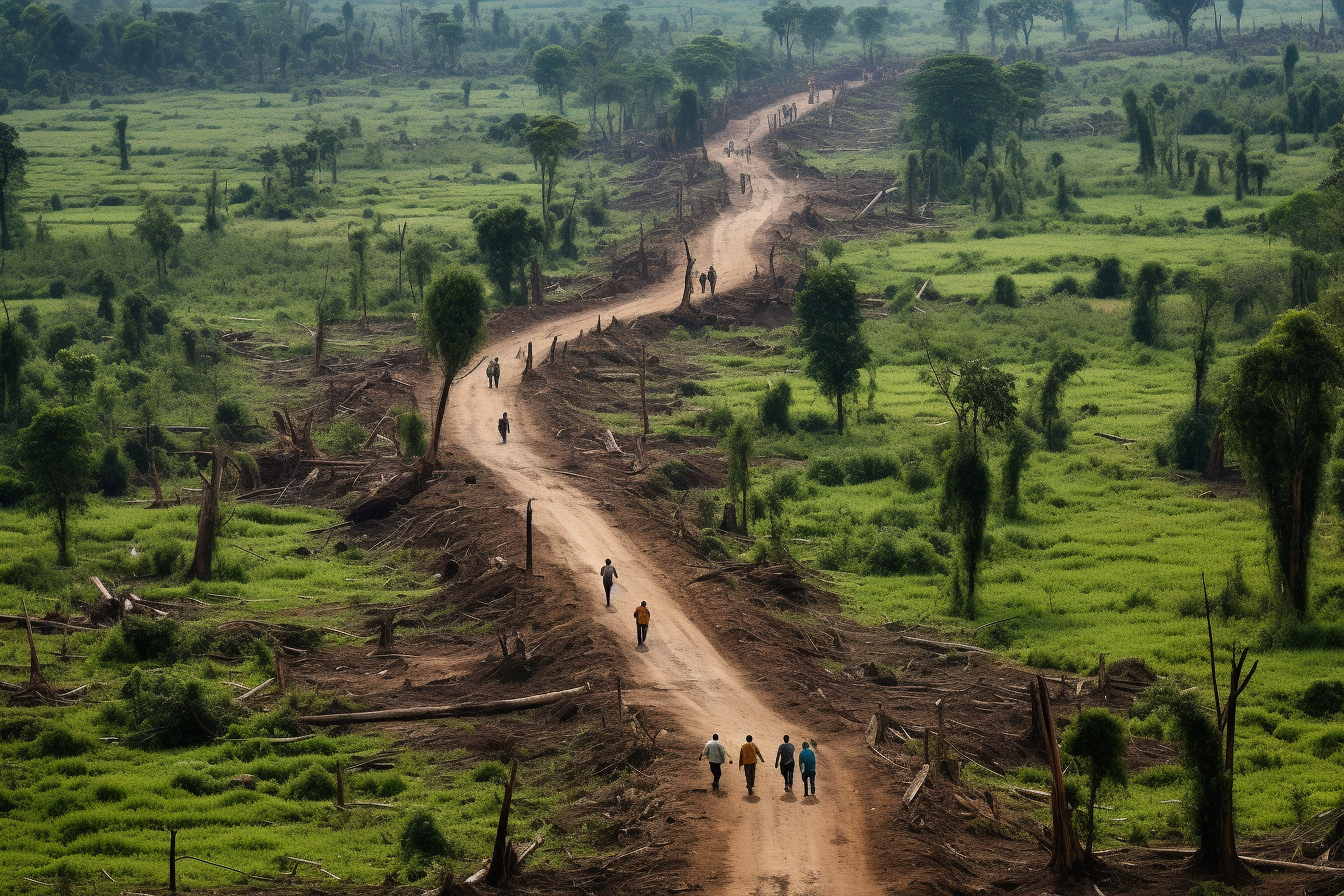Deforestation is a harmful phenomenon that affects not only the environment, but also local populations. In many regions of the world, deforestation has become a major issue that has economic, social and environmental consequences on local communities.
Direct link between deforestation and the deterioration of the living conditions of local communities
Deforestation has direct consequences on local communities. Forests are home to a wide variety of plants and animals that are used by local people for food, medicine, construction and other forest products. Deforestation not only reduces the availability of these forest products, but it also disrupts local ecosystems and compromises biodiversity. Additionally, deforestation can lead to soil depletion, reduced water availability, increased flooding and landslides, which can disrupt the livelihoods of local communities and endanger their security.
Economic, social and environmental implications caused by deforestation in affected regions
Deforestation has considerable economic, social and environmental implications. Economically, deforestation can have negative effects on local industries such as agriculture, fishing and tourism, which can be affected by ecosystem disruptions and reduction of natural resources. Socially, deforestation can lead to conflicts between local populations and extractive industries, as well as the loss of traditions and ways of life that are linked to forests. Additionally, local populations may be forced to leave their land due to the expansion of extractive industries and deforestation. Finally, deforestation has large-scale environmental impacts, such as releasing large amounts of carbon dioxide into the atmosphere, acidifying soils, and destroying natural habitats.
Impact of public policies on deforestation
In the current context of increased awareness of deforestation, it is crucial to examine the role that public policies play in this global phenomenon. Although deforestation results from several factors, government decisions and actions have a major influence on the extent and speed of forest loss.
Economic expansion policies, often focused on the exploitation of natural resources, can indirectly encourage deforestation. For example, the establishment of infrastructure such as roads and dams facilitates access to previously inaccessible forest areas, paving the way for logging and mining. At the same time, tax incentives or subsidies for certain industries, such as large-scale agriculture or livestock, can push the conversion of forests into agricultural land.
On the other hand, some governments recognize the inestimable value of forests, not only for their resources, but also for their ecosystem services. In these cases, policies are developed to protect forests, for example through the creation of national parks or protected areas. Additionally, implementing strict regulations on logging and granting concessions can help curb unregulated deforestation.
Additionally, international diplomacy and climate change agreements, such as the Paris Agreement, have introduced mechanisms to incentivize countries to reduce deforestation. For example, the REDD+ (Reducing Emissions from Deforestation and Forest Degradation) mechanism offers financial incentives to countries that successfully reduce deforestation and improve forest management.
Health issues of deforestation
Deforestation also impacts the health of local populations and, in some cases, global health. By destroying natural habitats, we increase the risk of contact between humans and wild animals, which can lead to the emergence of zoonotic diseases, i.e. diseases that can be transmitted from animals to humans. .
Removing trees and plants can also increase the spread of vector-borne diseases, such as malaria. Forests act as natural regulators for many insects, including mosquitoes. By destabilizing this balance, we can observe an increase in the population of these insects, and therefore in the risk of disease transmission.
Furthermore, forests play a vital role in purifying the air. They absorb pollutants and release oxygen, helping to improve the quality of the air we breathe. Deforestation increases air pollution, exposing local populations to increased health risks, such as respiratory diseases.
Direct exposure to chemicals used in intensive agriculture, often carried out after deforestation, can also cause health problems. These products can contaminate water sources, making the water undrinkable and posing health risks to those who rely on it.
Finally, the mental and emotional stress experienced by local communities in the face of the loss of their natural environment should not be underestimated. The forest is not only a source of food and income for these populations; it also has spiritual and cultural value.
Role of local and community initiatives in the fight against deforestation
Faced with the scale of deforestation and its disastrous consequences, several local and community initiatives are emerging around the world. These initiatives aim to counter the negative impacts of deforestation while offering sustainable economic alternatives for local communities.
Communities that live near forests have in-depth knowledge of these ecosystems. Because their lives are intrinsically linked to the forest, they often have a unique perspective on how to manage it sustainably. Rather than relying solely on government directives or international interventions, these communities are developing approaches based on their traditions and ancestral know-how.
A notable example is community forest management. In this model, the rights of management and use of the forest are entrusted to the local community. This allows them to decide on the exploitation of forest resources while ensuring the conservation and regeneration of the forest. Additionally, it provides the community with a stable source of income, while preserving the ecosystem for future generations.
Alongside community management, community-led reforestation initiatives are also emerging. These programs encourage the planting of endemic trees, while providing training and support for implementing sustainable agricultural practices.
Ecotourism is another alternative that is growing in popularity. By promoting the beauty and richness of their forests, certain communities attract visitors seeking an authentic experience. These tourism initiatives generate income for the community, while educating visitors about the importance of conservation.












